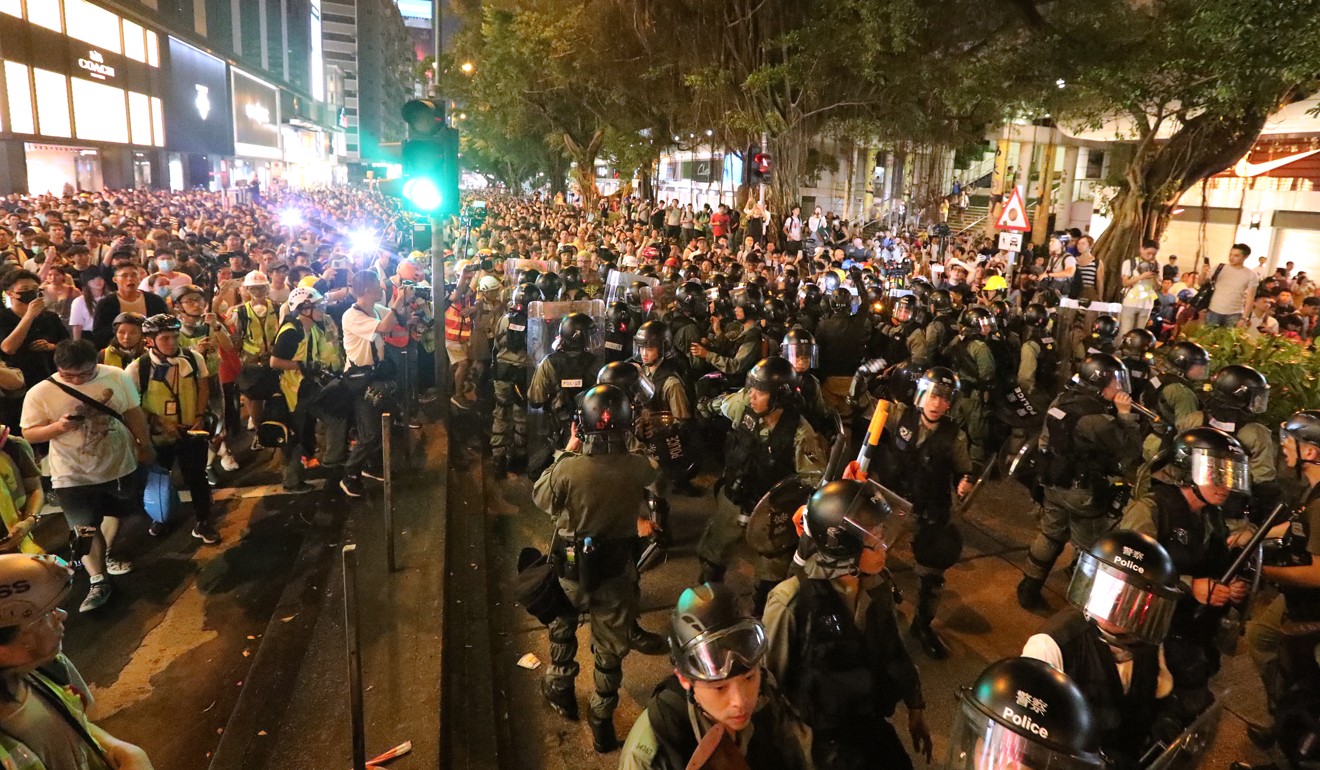
Hong Kong Tourism Board chief to focus on US market when protests die down, and says Californian millennials are his target audience
- Pang Yiu-kai preparing for life after civil unrest and will look to visitors from North America to boost struggling industry
Attracting young travellers from the United States will be a priority in boosting Hong Kong’s struggling tourism industry, the man in charge of promoting the city overseas has said.
Pang Yiu-kai, who took over as chairman of the Hong Kong Tourism Board in April, said he hoped the civil unrest gripping the city would end with officials engaging in direct dialogue with residents, allowing it to move on and regain its economic momentum.
Veteran businessman Pang was speaking in Los Angeles as the tourism board organised a three-day event to promote tourism to the city last week.
Pang also attended a separate symposium organised by the Hong Kong Trade Development Council in the Californian city on September 20.
Since June, anti-government demonstrators have protested in various districts in Hong Kong and severely disrupted the city’s airport on several occasions.

In tourist districts such as Tsim Sha Tsui, protesters have hurled petrol bombs at riot police, who have responded with tear gas and rubber bullets.
Asked whether it was the wrong time to promote Hong Kong, Pang said the tourism board had to plan for the city’s recovery.
“I hope public sentiment will improve through communication between officials and the people,” he said. “It takes time for foreign travel agents to plan, so it’s time to prepare, and new products can be launched when the protests end.”
The US has long been an important market for the city, accounting for Hong Kong’s fourth-largest group of visitors last year. In terms of total overnight visitor spending, Americans were the city’s second largest, only behind mainland Chinese.
In August, as the city suffered a staggering 40 per cent drop in tourist numbers, US tourists only decreased by 20 per cent.
Hong Kong’s summer of discontent could lead to ‘chilly winter’ for tourism
Pang said apart from achievers and middle-class travellers, young Americans and millennials from California had shown an increasing interest in Hong Kong, and other East Asian destinations.
As a result, the tourist board would try to lure more of them to the city, he said.
“We see millennials as an adventurous group that love to collect experiences and memories, they would find traditional culture such as paper art interesting,” he said, in a reference to the tourism board’s ongoing projects to promote small shops and Chinese craftsmanship in local communities such as Sham Shui Po.
“There are direct flights from California to Hong Kong. The demographics of this state are also special – its people are relatively wealthy and well-educated.”
Pang also said that since American tourists prefer visiting multiple destinations or cities as they travel, the tourism board would promote the Greater Bay Area, which comprises Hong Kong, Macau and nine Guangdong cities, as a new option for young travellers to consider.
“Americans would find transport infrastructure in the area appealing. It must be amazing to them that the Express Rail Link can take them from Hong Kong to Shenzhen in 15 minutes, because they don’t have high-speed trains in the US,” he said.
“The Hong Kong-Zhuhai-Macau Bridge should also be attractive to them.”
Laudie Hanou, vice-president of California-based luxury travel agent Sita World Tours, agreed that the GBA could become popular with American millennials.
“Before it was always Hong Kong and Macau [for US travellers,] and now it is Hong Kong, Macau and southern China,” she said.
“The nine cities within southern China, each have their own attraction and component to it.”
Hanou believes her customers would be interested in visiting bay area cities such as Zhongshan, as it is the hometown of Sun Yat-sen, founder of modern China.
She hopes the protests end soon, as sales for Hong Kong had slowed considerably.
Mark Grundy, chief operating officer of Avanti Destinations, which specialises in independent travel, also said forward sales for Hong Kong were down, when other destinations such as South Korea, the Philippines and Taiwan remained popular.
Cathay Pacific vice-president Patrick Mitchell said economic woes and protests were to blame for a 30 per cent year-on-year plunge in the airline’s business in the Americas.
Wilson Wong Yu-ho, CEO of Grand Holidays, which focuses on helping Chinese customers plan their trip to East Asia, said business was even worse for him.
“It was down by more than 40 per cent in recent months. The Hong Kong government and the tourism board need to make people feel that it’s safe to travel in the city,” he said.
“I believe that after the end of the protests, we can bring back at least 50 per cent of those who stayed away within three months.”
Tony Cheung was reporting from Los Angeles

